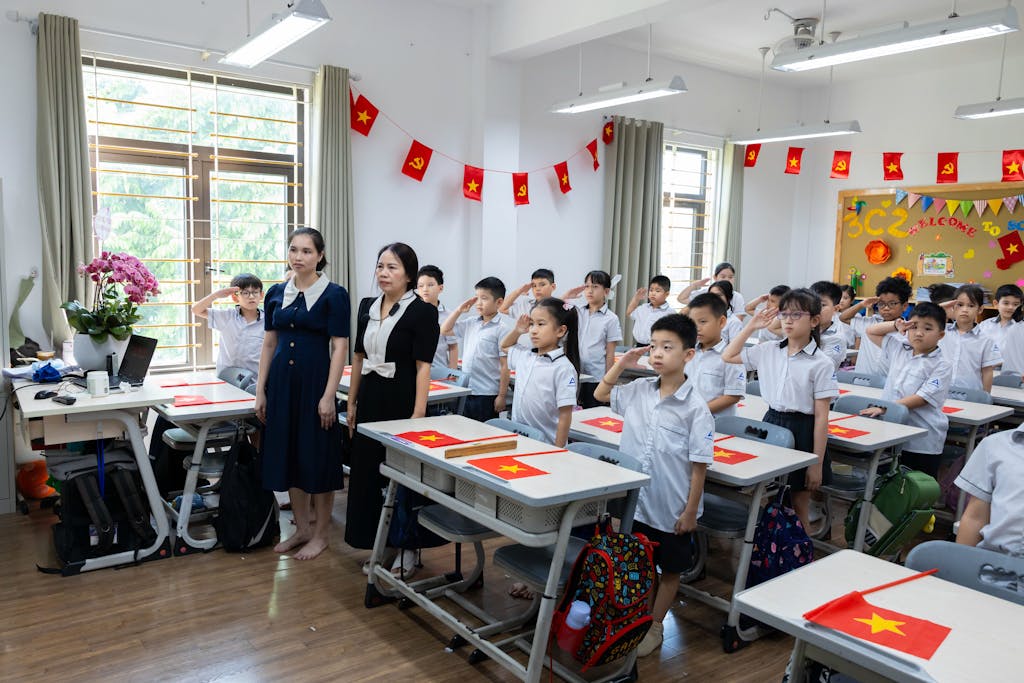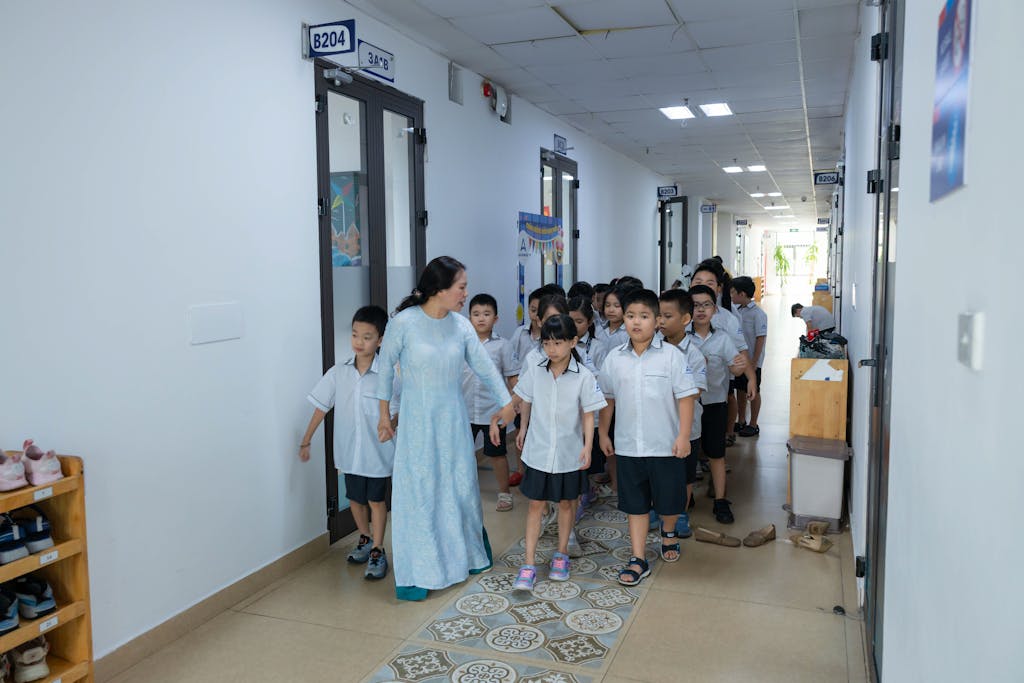Introduction to Classroom 15x Transformation
Transforming your classroom 15x means revolutionizing the learning environment to make it engaging, effective, and future-ready. The term classroom 15x represents a bold leap in education, amplifying traditional methods with innovative strategies that captivate students and enhance outcomes. This guide explores how to achieve this transformation through technology, pedagogy, and student-centered approaches.
The classroom 15x concept is about multiplying the impact of teaching by integrating tools like interactive displays, personalized learning plans, and collaborative spaces. By focusing on student needs, educators can create dynamic environments that foster creativity and critical thinking. This approach ensures that the room 15x becomes a hub for innovation, not just a place for rote learning.
Whether you’re a teacher, administrator, or parent, understanding how to implement classroom strategies is crucial. This guide provides actionable insights to help you elevate your class 15x, ensuring students thrive in an ever-evolving world. Let’s dive into the key components that make this transformation possible.
Why Classroom 15x Matters in Modern Education
The classroom 15x model is vital because it addresses the demands of 21st-century learning. Traditional classrooms often struggle to keep pace with technological advancements and diverse student needs. By adopting a classroom 15x approach, educators can create flexible, inclusive spaces that inspire students to excel.
This transformation enhances engagement by incorporating tools like virtual reality and gamified learning, making the classroom 15x a vibrant ecosystem. It also promotes equity by tailoring education to individual learning styles, ensuring no student is left behind. The result is a classroom 15x that prepares students for real-world challenges.
Moreover, classroom 15x strategies empower teachers to become facilitators of knowledge rather than just lecturers. This shift fosters deeper connections between students and educators, making learning more meaningful. Embracing classroom 15x is not just an upgrade—it’s a necessity for future-ready education.
Key Technologies Driving Classroom 15x Success
Technology is the backbone of the classroom 15x revolution. Tools like smartboards, AI-driven tutoring systems, and cloud-based platforms transform how lessons are delivered. These innovations make the classroom 15x interactive, allowing students to engage with content in real time.
For instance, augmented reality (AR) brings abstract concepts to life, while learning management systems (LMS) streamline assignments and feedback. These technologies create a classroom 15x environment where students can explore subjects at their own pace, fostering independence and curiosity.
Integrating these tools requires planning and training, but the payoff is immense. A well-equipped classroom 15x not only boosts academic performance but also prepares students for tech-driven careers. Investing in these technologies is a step toward a brighter educational future.
All so read:TheBaddiesHub
Pedagogical Shifts for a Classroom 15x
A classroom 15x demands a shift from traditional teaching methods to student-centered pedagogies. Approaches like project-based learning (PBL) and flipped classrooms encourage active participation, making the classroom 15x a space for collaboration and discovery.
These methods prioritize critical thinking and problem-solving over memorization. By focusing on real-world applications, the classroom 15x becomes a place where students develop skills like teamwork and adaptability, essential for future success.
Teachers must also adopt flexible roles, acting as guides rather than sole knowledge providers. This shift ensures the classroom 15x nurtures independent learners who are ready to tackle global challenges. Embracing these pedagogies is key to unlocking the full potential of classroom 15x.
Designing the Physical Classroom 15x Space
The physical layout of a classroom 15x plays a critical role in its success. Flexible furniture, such as movable desks and collaborative workstations, creates an adaptable learning environment. This setup supports group activities and individual focus within the classroom 15x.
Natural light, vibrant colors, and ergonomic designs enhance student well-being and concentration. A well-designed classroom 15x also incorporates tech hubs for device charging and interactive displays, ensuring seamless integration of digital tools.
By prioritizing comfort and functionality, educators can create a classroom 15x that feels inviting and inspires creativity. A thoughtfully designed space is the foundation for transformative learning experiences.
Engaging Students in a Classroom 15x
Student engagement is at the heart of the classroom 15x. Interactive tools like gamification and virtual simulations make learning fun and memorable. These methods keep students invested in their classroom 15x experience.
Personalized learning paths allow students to explore topics that interest them, increasing motivation. In a classroom 15x, teachers can use data analytics to track progress and tailor lessons, ensuring every student feels valued.
Encouraging student voice and choice also fosters ownership of learning. By creating a classroom 15x where students feel heard, educators can build a culture of enthusiasm and lifelong learning.
Collaboration in the Classroom 15x
Collaboration is a cornerstone of the classroom 15x. Group projects and peer-to-peer learning encourage students to share ideas and solve problems together. This approach strengthens communication skills within the classroom 15x.
Technology, such as cloud-based platforms and virtual whiteboards, facilitates seamless collaboration, even in hybrid settings. These tools make the classroom 15x a hub for teamwork, preparing students for collaborative workplaces.
Teachers can foster collaboration by designing activities that require diverse skill sets. A classroom 15x that prioritizes teamwork ensures students develop interpersonal skills essential for their future careers.
Assessing Progress in a Classroom 15x
Assessment in a classroom 15x goes beyond traditional tests. Formative assessments, like quizzes and reflective journals, provide real-time insights into student progress. This approach ensures the classroom 15x remains responsive to individual needs.
Digital tools enable continuous feedback, allowing teachers to adjust lessons dynamically. In a classroom 15x, assessments are less about grades and more about growth, encouraging students to take risks and learn from mistakes.
By focusing on holistic evaluation, the classroom 15x helps students develop a growth mindset. This shift ensures assessments drive learning rather than define it.
Inclusive Education in the Classroom 15x

Inclusivity is a key pillar of the classroom 15x. Universal Design for Learning (UDL) ensures that all students, regardless of ability, can thrive. The classroom 15x adapts to diverse needs through flexible teaching methods and accessible tools.
Assistive technologies, like text-to-speech software, support students with disabilities, making the classroom 15x a welcoming space. Teachers can also use differentiated instruction to address varying skill levels.
By prioritizing equity, the classroom 15x fosters a sense of belonging. Every student feels empowered to contribute, creating a richer learning environment for all.
Preparing Teachers for Classroom 15x Success
Teachers are the driving force behind a classroom 15x. Professional development programs equip educators with the skills to integrate technology and innovative pedagogies effectively. Training is essential for a successful classroom 15x.
Workshops on tools like AI platforms and collaborative software prepare teachers to create dynamic lessons. A well-prepared teacher can transform the classroom 15x into a space of endless possibilities.
Ongoing support, such as peer mentoring and online resources, ensures teachers stay confident and adaptable. Investing in educators is the key to sustaining a thriving classroom 15x.
Parental Involvement in the Classroom 15x
Parents play a vital role in the classroom 15x ecosystem. Open communication through apps and newsletters keeps parents informed about classroom 15x activities and their child’s progress.
Workshops and events can educate parents about the classroom 15x approach, encouraging them to support learning at home. Engaged parents reinforce the transformative power of the classroom 15x.
By fostering partnerships, the classroom 15x becomes a community effort. Parents and teachers working together ensure students receive consistent encouragement and resources.
Scaling Classroom 15x Across Schools
Scaling the classroom model requires strategic planning. Schools must invest in infrastructure, like high-speed internet and modern devices, to support a classroom at scale.
Professional development for all staff ensures consistency across classrooms. A unified vision for the classroom aligns teachers, administrators, and stakeholders toward common goals.
Pilot programs can test classroom strategies before full implementation. By starting small and scaling thoughtfully, schools can create a network of transformative classroom environments.
Challenges of Implementing classroom
Implementing a classroom comes with challenges, such as budget constraints and resistance to change. Schools must secure funding for technology and training to build a sustainable classroom.
Teacher buy-in is critical. Some educators may hesitate to adopt new methods, fearing disruption. Addressing concerns through open dialogue ensures a smooth transition to a classroom.
Technical issues, like software glitches, can also hinder progress. A robust support system and contingency plans keep the classroom running smoothly despite setbacks.
Measuring the Impact of classroom
Measuring the success of a classroom requires clear metrics, such as student engagement, academic performance, and skill development. Data from assessments and surveys provide insights into the classroom’s impact.
Long-term outcomes, like college readiness and career success, also reflect the effectiveness of a classroom. Tracking these metrics ensures continuous improvement.
By analyzing data, schools can refine their classroom strategies. This iterative process ensures the classroom remains a powerful tool for educational transformation.
Future Trends in classroom
The future of the classroom is bright, with emerging trends like AI personalization and immersive learning environments. These advancements will make the classroom even more dynamic and effective.
Sustainability will also shape the classroom, with eco-friendly designs and digital resources reducing environmental impact. Schools adopting these trends will lead the way in education.
As technology evolves, the classroom will continue to adapt, ensuring students are prepared for an ever-changing world. Staying ahead of these trends is key to long-term success.
Case Studies of classroom Success
Real-world examples highlight the power of the classroom. A school in California implemented a classroom with VR tools, boosting student engagement by 30%. This success shows the potential of innovative strategies.
Another case study from a rural district used affordable tablets to create a classroom, improving test scores by 15%. These stories demonstrate the scalability of the classroom model.
By learning from these examples, schools can adapt classroom strategies to their unique contexts, ensuring widespread success.
Tips for Sustaining a classroom
Sustaining a classroom 15x requires ongoing effort. Regular technology updates and maintenance keep the classroom functional and relevant. Budgeting for these updates is essential.
Continuous professional development ensures teachers remain confident in using classroom tools. Peer collaboration also fosters a culture of innovation.
Engaging students and parents consistently maintains momentum. A classroom thrives when all stakeholders are committed to its long-term success.
FAQs About Classroom 15x
What is a classroom 15x?
A classroom 15x is an innovative learning environment that amplifies traditional education through technology, student-centered pedagogies, and flexible spaces to create impactful learning experiences.
How can teachers implement classroom 15x strategies?
Teachers can start by integrating tools like smartboards and adopting methods like project-based learning. Professional development is key to mastering classroom 15x techniques.
What technologies are essential for a classroom 15x?
Key technologies include interactive displays, AI tutoring systems, and cloud-based platforms, all of which enhance the interactivity and accessibility of the classroom 15x.
How does classroom 15x benefit students?
The classroom 15x boosts engagement, personalizes learning, and develops critical skills, preparing students for future academic and career success.
What challenges might schools face with classroom 15x?
Challenges include funding, teacher resistance, and technical issues. Addressing these through planning and support ensures a successful classroom 15x implementation.








